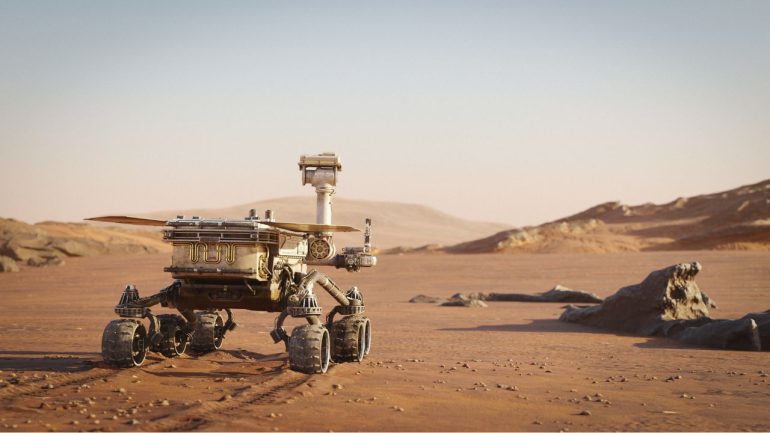- NASA developed a machine learning algorithm to accelerate the analysis of Mars rover samples.
- The algorithm, trained over a decade, identifies organic compounds detected by the rover.
- Automation allows for faster identification, enabling the rover to focus on detecting samples and uncovering patterns.
- The first deployment will be on the Rosalind Franklin rover, launching no earlier than 2028.
- The Mars Organic Molecule Analyzer (MOMA) instrument feeds data into the algorithm to predict chemical compositions.
- The rover will drill 6.6 feet into Mars’ surface, the deepest excavation on the planet to date.
- The algorithm enhances the chances of finding preserved ancient organic materials, aiding in the search for past life on Mars.
Main AI News:
NASA has unveiled a cutting-edge machine learning algorithm designed to expedite the analysis of samples collected by Mars rovers, significantly enhancing the efficiency of organic compound identification. After over a decade of development, this algorithm has been meticulously trained to recognize organic materials detected by the rover, streamlining the identification process by sending data back to Earth. This automation allows the rover to concentrate on sample detection and uncover patterns that might elude human observation.
The algorithm has undergone rigorous training to identify potential substances that may be found on Mars. It will analyze data from the Mars Organic Molecule Analyzer (MOMA) instrument, generating predictions regarding the chemical composition of the collected samples. This innovative technology will debut on the Rosalind Franklin rover, part of the European Space Agency’s Mars mission, slated for launch in 2028.
Xiang “Shawn” Li, a mass spectrometry expert at NASA’s Goddard Space Flight Center, pointed out that organic materials on Mars are vulnerable to destruction by surface radiation and cosmic rays, which penetrate the subsurface. However, the two-meter depth at which the rover will operate should be sufficient to protect most organic matter. Therefore, MOMA holds the promise of detecting well-preserved ancient organics, a vital step in determining if life ever existed on Mars.
Conclusion:
NASA’s advancement in machine learning technology for Mars exploration signals a significant shift in the space exploration market. By automating complex data analysis tasks, this algorithm drastically reduces the time and resources required to process and interpret data, allowing for more efficient missions. This technology sets a precedent for integrating AI in space exploration, opening new opportunities for partnerships and investments in AI-driven solutions. The successful implementation of this algorithm could drive further innovation, encouraging private sector involvement and accelerating the commercialization of space exploration technologies. This breakthrough positions AI as a critical component in future space missions, likely spurring growth in related sectors, including robotics, data analytics, and advanced instrumentation.

